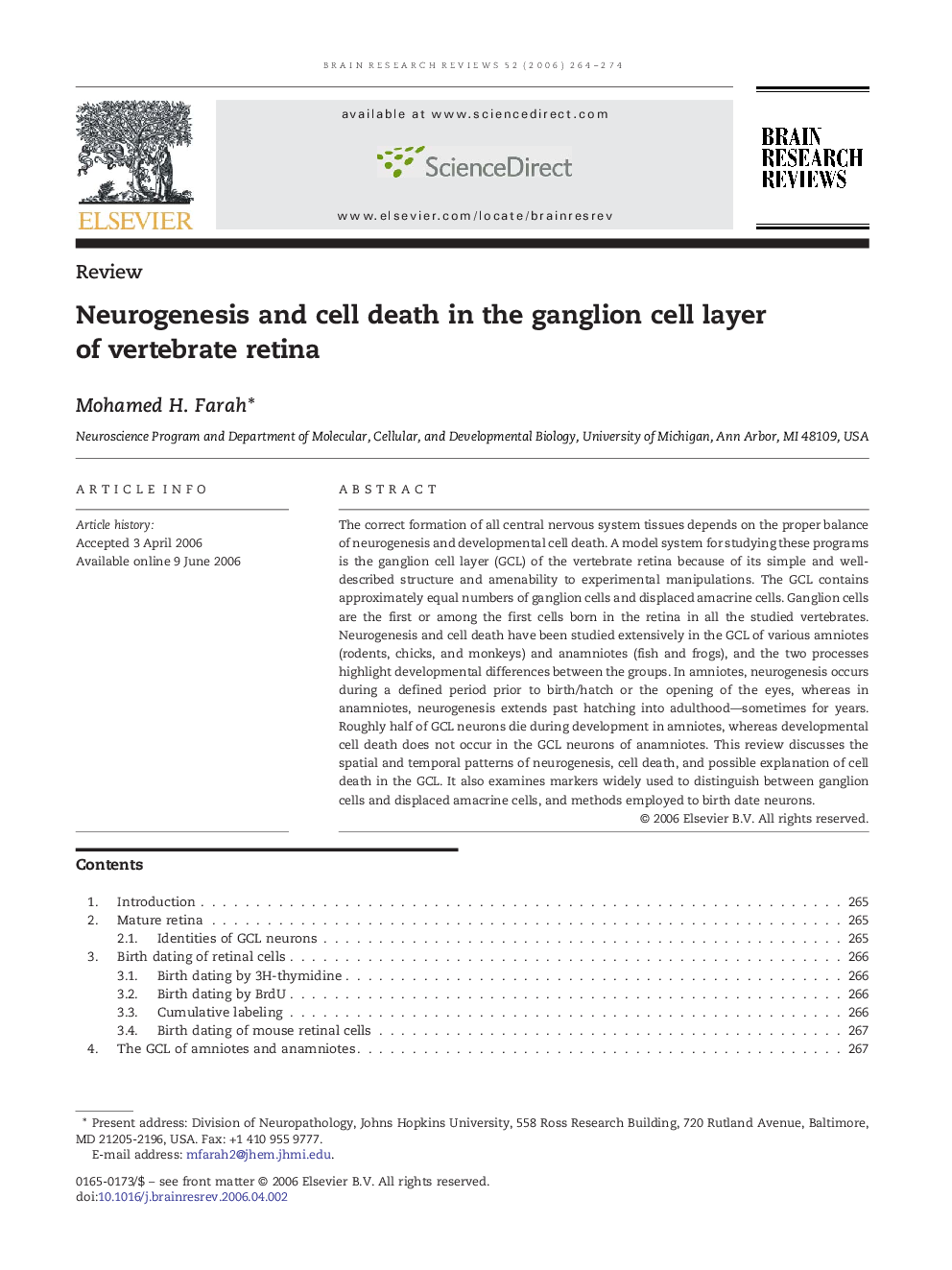| Article ID | Journal | Published Year | Pages | File Type |
|---|---|---|---|---|
| 4334090 | Brain Research Reviews | 2006 | 11 Pages |
The correct formation of all central nervous system tissues depends on the proper balance of neurogenesis and developmental cell death. A model system for studying these programs is the ganglion cell layer (GCL) of the vertebrate retina because of its simple and well-described structure and amenability to experimental manipulations. The GCL contains approximately equal numbers of ganglion cells and displaced amacrine cells. Ganglion cells are the first or among the first cells born in the retina in all the studied vertebrates. Neurogenesis and cell death have been studied extensively in the GCL of various amniotes (rodents, chicks, and monkeys) and anamniotes (fish and frogs), and the two processes highlight developmental differences between the groups. In amniotes, neurogenesis occurs during a defined period prior to birth/hatch or the opening of the eyes, whereas in anamniotes, neurogenesis extends past hatching into adulthood—sometimes for years. Roughly half of GCL neurons die during development in amniotes, whereas developmental cell death does not occur in the GCL neurons of anamniotes. This review discusses the spatial and temporal patterns of neurogenesis, cell death, and possible explanation of cell death in the GCL. It also examines markers widely used to distinguish between ganglion cells and displaced amacrine cells, and methods employed to birth date neurons.
